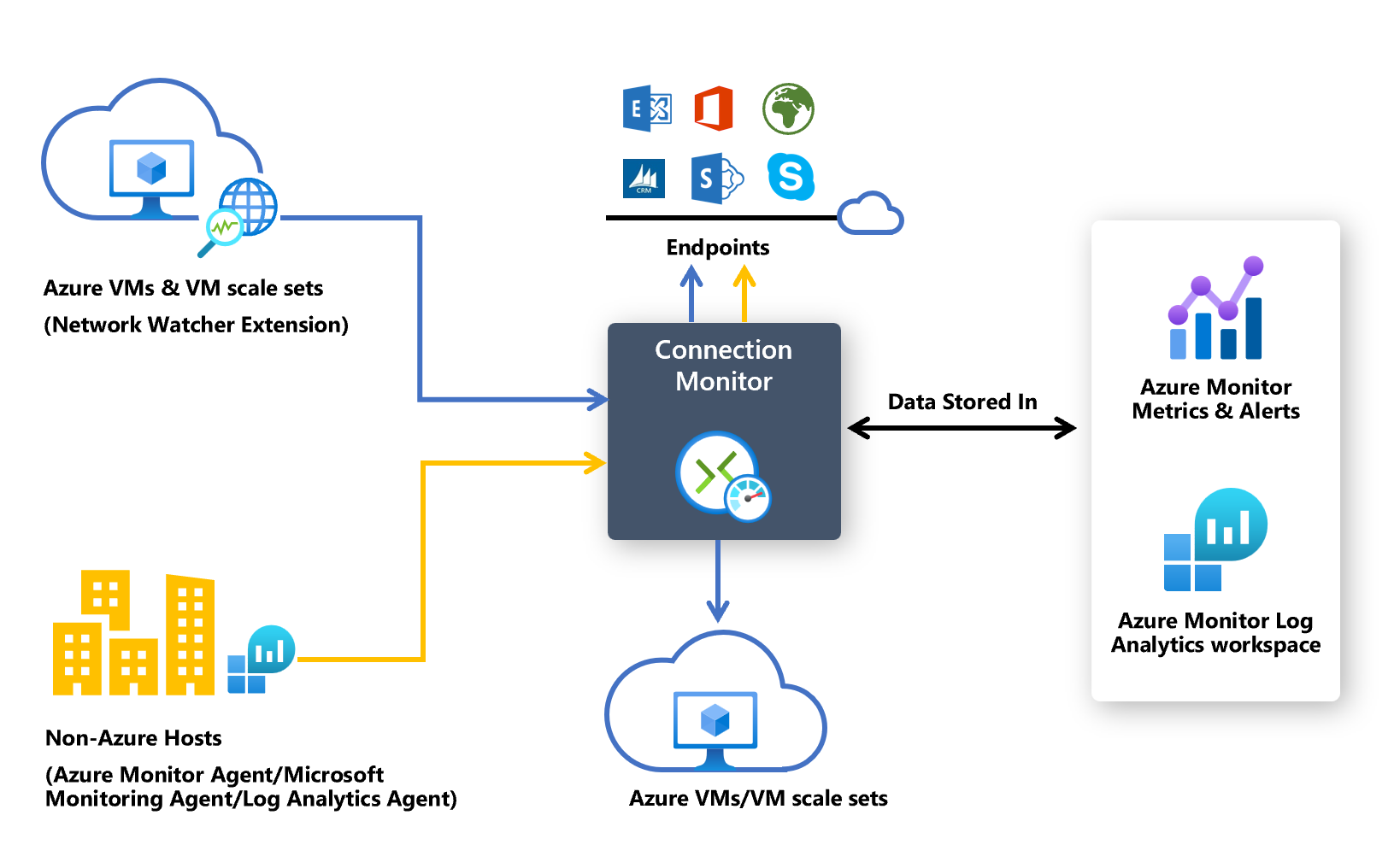As Azure Architect, our ongoing commitment to optimizing network monitoring and improving performance efficiency has reached a significant milestone. Today, we’re excited to announce the integration of Azure Monitor Agent with Connection Monitor, available globally from November 16, 2023. This integration represents a crucial step forward in network monitoring within Azure environments.
Empowering Network Visibility with Connection Monitor
Connection Monitor, a component within Azure Network Watcher, offers a unified, end-to-end solution for connection monitoring. It enables the monitoring, diagnosis, and viewing of connectivity-related metrics for both hybrid and Azure cloud deployments. Its capabilities are pivotal in ensuring seamless connectivity across diverse deployment environments.
Seamless Transition from Legacy Dependencies
Connection Monitor now supports the Azure Monitor agent extension, eliminating any dependency on the legacy Log Analytics agent. This transition enables a unified approach to connectivity logs and metrics data collection across Azure and on-premises machines, consolidating various monitoring agents into a singular, powerful solution.
The Azure Monitor Agent’s Benefits
The Azure Monitor agent brings a multitude of benefits that significantly enhance our monitoring capabilities:
- Enhanced Security and Performance Capabilities: Strengthening security measures while optimizing performance metrics for seamless monitoring.
- Effective Cost Savings: Streamlining data collection processes for efficient cost management.
- Simplified Troubleshooting: Facilitating ease of troubleshooting with simpler data collection management, replacing the Log Analytics agent.
For a deeper dive into the Azure Monitor agent’s capabilities, explore the Azure Monitor agent documentation.
Getting Started with Connection Monitor
To harness the power of Connection Monitor for network monitoring, a series of steps guide us through the installation and deployment process:
- Installing Monitoring Agents for Azure and Non-Azure Resources: Connection Monitor relies on lightweight executable files to perform connectivity checks, supporting both Azure and on-premises environments. The installation process varies based on the host environment:
- For Azure virtual machines and Virtual Machine Scale Sets, refer to the documentation on “Agents for Azure Virtual Machines and Virtual Machine Scale Sets“.
- For on-premises machines, enabling recognition by Connection Monitor involves specific steps:
- Enable hybrid endpoints to Azure Arc-enabled servers.
- Connect hybrid machines by installing the Azure Connected Machine agent on each machine.
- Install the Azure Monitor agent to enable the Network Watcher extension, collecting monitoring logs and data from hybrid sources.
- Enabling the Network Performance Monitor Solution for On-Premises Machines: Enabling this solution involves navigating through the Azure portal, accessing Network Watcher, and configuring the Network Performance Monitor solution within a selected workspace. Detailed instructions for enabling the Network Performance Monitor solution for on-premises machines can be found here.
Considerations and Next Steps
While Azure Monitor agent coexists with the legacy Log Analytics agent, ensuring a smooth transition, certain considerations must be accounted for:
- Avoiding Data Duplication: Collecting duplicate data from both agents can skew query results and impact downstream features such as alerts and dashboards.
- Resource Consumption: Running both agents simultaneously can result in increased resource consumption, affecting CPU, memory, storage, and network bandwidth.
For further insights into the coexistence of Azure Monitor agent with other agents and guidance on next steps, refer to the detailed documentation here.
Enhanced Network Monitoring
The integration of Azure Monitor Agent with Connection Monitor heralds a new era of, efficient network monitoring. As Azure Architect, we’re committed to leveraging these capabilities to ensure a robust and seamless monitoring experience for our networks.
